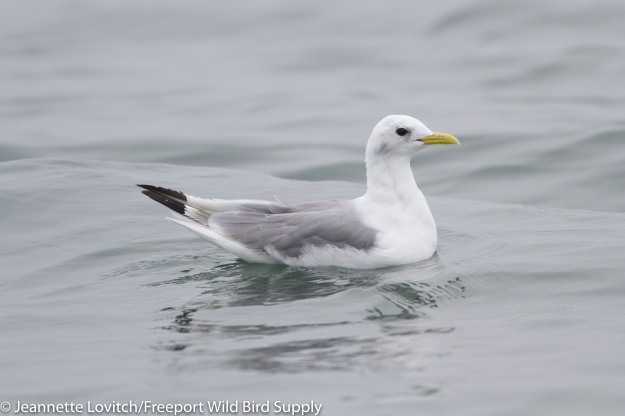
Jeannette and I spent our summer vacation in the neighboring Province of New Brunswick. For far too long, we have been saying we needed to get to the head of the Bay of Fundy in August, so this year we finally made it happen.
It’s a beautiful area, and August is a great time of year to visit the Maritimes. However, our primary motivation wasn’t the scenery, the weather, or even the poutine. We were here to see one of the great natural spectacles of the entire region: the fall migration of the Semipalmated Sandpiper.

Up to 75% of the world’s population of this small shorebird (“peep”) passes through the Bay of Fundy each fall, stopping to feed and fuel up on the region’s immense mudflats, with recent estimates of several hundred thousand birds. With that Bay’s 40-foot tides and mudflats of over a mile wide, “Semi-Sands” find a lot of foraging habitat, and a lot of food. In particular, a species of mudshrimp that can be found in incredible densities of 60,000 per square meter! Along with a nutrient-rich biofilm on the mudflats’ surface, Semi-Sands can put on enough fat reserves to fuel a three-day non-stop flight to their wintering areas in Northern South America. (For more information about the region, including a map and components of the food chain, I highly recommend the Bay of Fundy Mudflats website).

While “flocks of over 100,000” are rare these days, flocks of 50,000 or more can be encountered, ebbing and flowing with each change in the wind and arrival and departure of flocks. This wonder of the avian world, a mere day’s drive away, is something we needed to do. And with the continued decline of Semipalmated Sandpipers – and sadly, most other shorebirds – we could not wait any longer.
We based our stay of three days in Sackville, a charming little town with surprisingly great restaurants and a remarkable downtown nature preserve. From our motel here, we drove the short distance to Johnson’s Mills twice each of our two full days of birding here – once each on the morning high to outgoing tide, and once each on the incoming to high tide in the evening.
Nature Conservancy Canada has an Interpretive Center on the shores of their reserve, a great place for viewing shorebirds or receiving information about the best current location of observation. Mostly, we spent our time nearby, usually by walking just a short distance south of the center.

And it was truly incredible. I am to come up with the words to describe it. It was, literally, awesome. And there is no way photos can do it justice, either. I did post a few phone-scoped videos on our store’s Facebook page that might help capture the scene a little, but I’ll just let these photos tell as much of the story here as they can.










Both days, we then visited the Sackville Waterfowl Park. This wonderful little gem, with entrances all around downtown, features managed wetlands that was chock full of birds. We had mixed-species foraging flocks of migrant warblers at the edge, roosting Greater and Lesser Yellowlegs wherever they could find some open mud, and lots of ducks – including at least 6 family groups of regionally-very-uncommon Gadwall.



And lots of other ducks, like American Wigeon.

Roosting Greater and Lesser Yellowlegs.
On our fourth day, we spent the high tide at Mary’s Point, on the other side of the bay, for a different perspective. A “mere” 8,000-10,000 Semipalmated Sandpipers were present here this morning, but likely due to the sandy beach, there were more plovers: both Black-bellied and Semipalmated.


A White-rumped Sandpiper stands watch over all.
We then enjoyed hiking and casual birding in Fundy National Park, before slowly making our way back to Maine via ferries and island-hopping to Campobello Island.

Seawatching from East Quoddy Head (Great and Sooty Shearwaters, etc), a Baird’s Sandpiper on the Lubec Bar, and two wandering Great Egrets at the Baring Unit of the Moosehorn National Wildlife were among the avian highlights of our first day and a half in the area.
Thwarted by dense fog, the last morning of our vacation featured just enough clearing to allow us to get out on the water with our friend Chris from Eastport. The swirling mass of gulls feeding on the swirling waters in and around the Old Sow Whirlpool is another sight that should not be missed – luckily, this is one we enjoy almost every year. In just a couple of hours on the water, before the fog once again closed in, we saw 2000-3000 Bonaparte’s Gulls, 40 or so Red-necked Phalaropes, 4-5 Lesser Black-backed Gulls, over 100 Black-legged Kittiwakes, a lost Atlantic Puffin way up the straight, a couple of Razorbills, and this lovely adult Little Gull.


Arctic Terns

Black-legged Kittiwake

So if you haven’t gone to the head of the Bay of Fundy in August, I cannot recommend it enough. Lubec-Eastport is pretty fine this time of year as well (hence my biennial August van tour.) And yeah, we had some good poutine, too.


